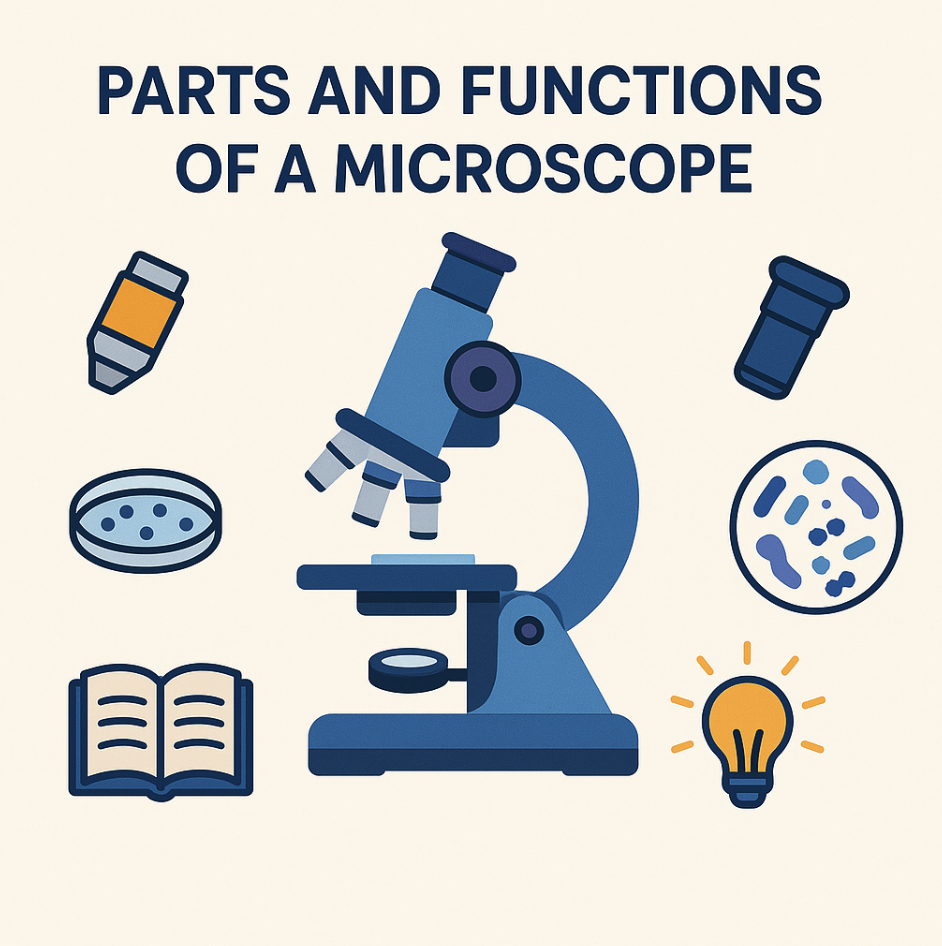
When you first set your eyes on a microscope slide, the promise of tiny worlds unfolding before you is thrilling. Yet many newcomers find themselves running into familiar snags: they skip the cover slip, resulting in blurry images, or dive straight into high magnification and lose their samples altogether. Mastering the basics of slide preparation and handling—like placing a gentle cover slip and starting at lower magnifications—can make all the difference.
Once you’ve picked up these foundational steps, you’ll unlock clearer, more reliable results and turn your explorations of the microscopic world into confident, rewarding adventures.
Understanding Microscope Slides
Types of Microscope Slides and Their Uses
Microscope slides come in various types, each designed for specific applications. Understanding these options helps you choose the right slide for your needs:
-
Glass Slides: These are the most common flat glass slides, typically measuring 3 x 1 inches. They are versatile and suitable for most microscopy tasks.
-
Prepared Microscope Slides: These slides already contain specimens, making them ideal for educational purposes or quick reference.
-
Charged Slides: These slides feature a chemical coating that enhances tissue adhesion, making them particularly suitable for specialized research applications.
-
Frosted Slides: These slides allow you to write directly on them, making it easier to label and identify different types of cells.
-
Colored Edges: These slides facilitate effective organization and labeling of specimens.
Most microscope slides are made from optical-quality glass, such as soda lime or borosilicate glass. For fluorescence microscopy, fused quartz slides provide ultraviolet transparency. Specialty plastics are also available for specific applications.
Wet Mounts vs. Dry Mounts: When to Use Each
Choosing between wet mount slides and dry mount slides depends on the type of specimen you are observing. The table below highlights their key differences:
|
Feature |
Dry Mount |
Wet Mount |
|---|---|---|
|
Preparation Method |
Requires a glass slide and cover slip with a non-moisture-based specimen. |
Uses a depression or well slide and cover slip with a liquid sample. |
|
Suitable Specimens |
Insect legs, flower petals, powders, dry chemicals. |
Living samples like pond water, cheek cells, or blood smear slides. |
|
Focus Requirement |
Sample must be flat for high-power microscopy. |
Sample can be liquid, allowing for movement. |
|
Permanence |
Typically not permanent unless sealed. |
Can be made permanent with clear nail polish. |
Wet slides are ideal for observing living samples, while dry mounts work best for solid or non-moisture-based specimens.
The Role of Staining in Microscopy
Staining enhances the visibility of microscopic specimens by adding color to specific structures. Most cells and microorganisms lack natural color, making it difficult to observe their details. Stains interact with specimens based on their chemical properties, highlighting features that would otherwise remain invisible. For example, a blood smear slide often requires staining to identify different types of cells.
Stains can be simple, using one dye, or differential, involving multiple dyes to distinguish between organisms. Common stain types include Methylene Blue, Crystal Violet, and Safranin. Techniques like Gram staining and acid-fast staining are widely used in microbiology.
Staining has been a cornerstone of microscopy since Robert Hooke’s early experiments in 1665, emphasizing its importance in exploring the microscopic world.
How to Use Microscope Slides: A Step-by-Step Guide
Handling Microscope Slides Safely
Proper slide handling is crucial to maintaining the integrity of your specimens and ensuring accurate observations. Follow these essential tips for proper slide handling:
-
Hold microscope slides by their edges to avoid smudging the cover glass.
-
Always start with the lowest magnification when viewing a slide.
-
After use, remove the slide carefully and store it in a labeled container.
-
Store slides in a stable environment with temperatures between 15 °C and 25°C and humidity levels of 45-55%.
-
Avoid stacking slides too high or exposing them to direct sunlight or moisture.
These practices help preserve your slides and ensure you see the sample clearly during observation.
How to Prepare Microscope Slides: Wet Mounts
To prepare a wet mount slide, gather the following materials: a flat or depression slide, a liquid sample (e.g., water or glycerin), a coverslip, tweezers, and optional tools like a toothpick or petroleum jelly. Follow these steps:
-
Place a drop of liquid in the center of the slide.
-
Use tweezers to position the specimen within the drop if it is not already in the liquid.
-
Hold the coverslip at an angle, allowing one edge to touch the liquid.
-
Slowly lower the coverslip to avoid trapping air bubbles.
Wet mounts are ideal for observing living samples, such as pond water or cheek cells.
How to Prepare Microscope Slides: Dry Mounts
Dry mount slides are simpler to prepare and work well for solid specimens. Use these steps:
-
Place the slide on a flat surface.
-
Use tweezers to position the sample on the slide.
-
Gently place the coverslip over the sample. For soft specimens, press the coverslip lightly to create a squash slide.
Dry mounts are ideal for observing items such as insect legs or flower petals.
Slide Mount Instructions for Staining Specimens
Staining enhances the visibility of microscopic structures. To stain a specimen, follow these steps:
-
Prepare a wet mount slide.
-
Use a pipette to place a drop of stain on one edge of the coverslip.
-
Place a piece of paper towel against the opposite edge to draw the stain under the coverslip.
-
Add more stain if necessary to ensure full coverage.
Allow the slide to dry completely before observation. This process highlights specific features, making it easier to study your specimen.
Observing Microscope Slides Under the Microscope
To observe a specimen, set up your microscope on a flat surface. Follow these steps:
-
Place the slide on the stage, centering the specimen under the lens.
-
Use the coarse adjustment knob to bring the lens close to the slide without touching it.
-
Look through the eyepiece and adjust the focus until the image is clear.
-
Switch to a higher magnification if needed, adjusting the focus carefully to avoid damage.
Clean the lens and slide after use to maintain clarity for future observations.
Tips and Best Practices for Beginners
Avoiding Common Mistakes with Microscope Slides
Using microscope slides effectively requires attention to detail. Beginners often make mistakes that can hinder their ability to observe accurately. Here are some common errors and how to avoid them:
-
Forgetting to use a cover slip reduces image clarity and affects the focal distance. Always place a cover slip over your specimen.
-
Overusing the fine focus adjustment can damage both the slide and the microscope. Adjust the focus gently and only as needed.
-
Starting with high magnification makes it harder to locate and center your sample. Begin with the lowest magnification and gradually increase it.
-
Moving the microscope without turning off the lamp shortens the lamp’s lifespan. Always power down the microscope before relocating it.
Avoiding these mistakes ensures better results and prolongs the life of your equipment.
Cleaning and Storing Microscope Slides
Proper cleaning and storage keep your slides in excellent condition for repeated use. Follow these cleaning tips:
-
Soak used slides in a mixture of distilled water, ethyl alcohol (95%), and xylene. Shake the container occasionally to loosen debris.
-
Wipe slides dry with a clean, lint-free cloth to prevent streaks or residue.
-
For stubborn stains, use a specialized cleaning solution. Avoid harsh chemicals that could damage the slide.
-
Handle slides by their edges to avoid fingerprints and smudges.
When storing slides, maintain a stable environment:
-
Maintain a temperature between 15-25°C and humidity levels of 45-55%.
-
Store slides flat in a protective box to prevent warping or breaking.
-
Avoid exposure to direct sunlight, moisture, or extreme temperatures.
These practices protect your slides and ensure clear observations every time.
Practicing Techniques to Improve Your Skills
Improving your microscopy skills takes practice and patience. Begin by examining common objects to familiarize yourself with slide preparation and observation techniques.
Some common objects to examine with a microscope include onion skin, hair strands, and pond water samples.
Experiment with both wet mount and dry mount techniques to understand their differences. Practice lowering the cover slip at an angle to avoid air bubbles. Use staining methods to highlight specific structures and enhance your observations.
Regular practice builds confidence and helps you master the art of microscopy. Over time, you’ll develop the precision and expertise needed to explore even the most intricate specimens.
Learning to use microscope slides opens up a fascinating world of discovery. Begin by mastering the basics, including preparing mounts, handling slides with care, and focusing your microscope accurately. Practice with everyday specimens, such as cheek cells, hair, or even salt crystals, to build your skills.
Each slide you prepare brings you closer to uncovering the hidden beauty of the microscopic world.
FAQ
How do you prevent air bubbles when preparing a wet mount?
Lower the coverslip at an angle onto the liquid. This technique minimizes trapped air bubbles, ensuring a clear view of your specimen under the microscope.
Why is starting with low magnification important?
Low magnification helps you locate and center the specimen on the stage. Once centered, you can switch to a higher objective for detailed observation without losing focus.
What should you do if the image appears blurry?
Adjust the coarse focus knob first, then fine-tune with the fine focus knob. Ensure the slide is properly centered on the stage and the objective lens is clean.


